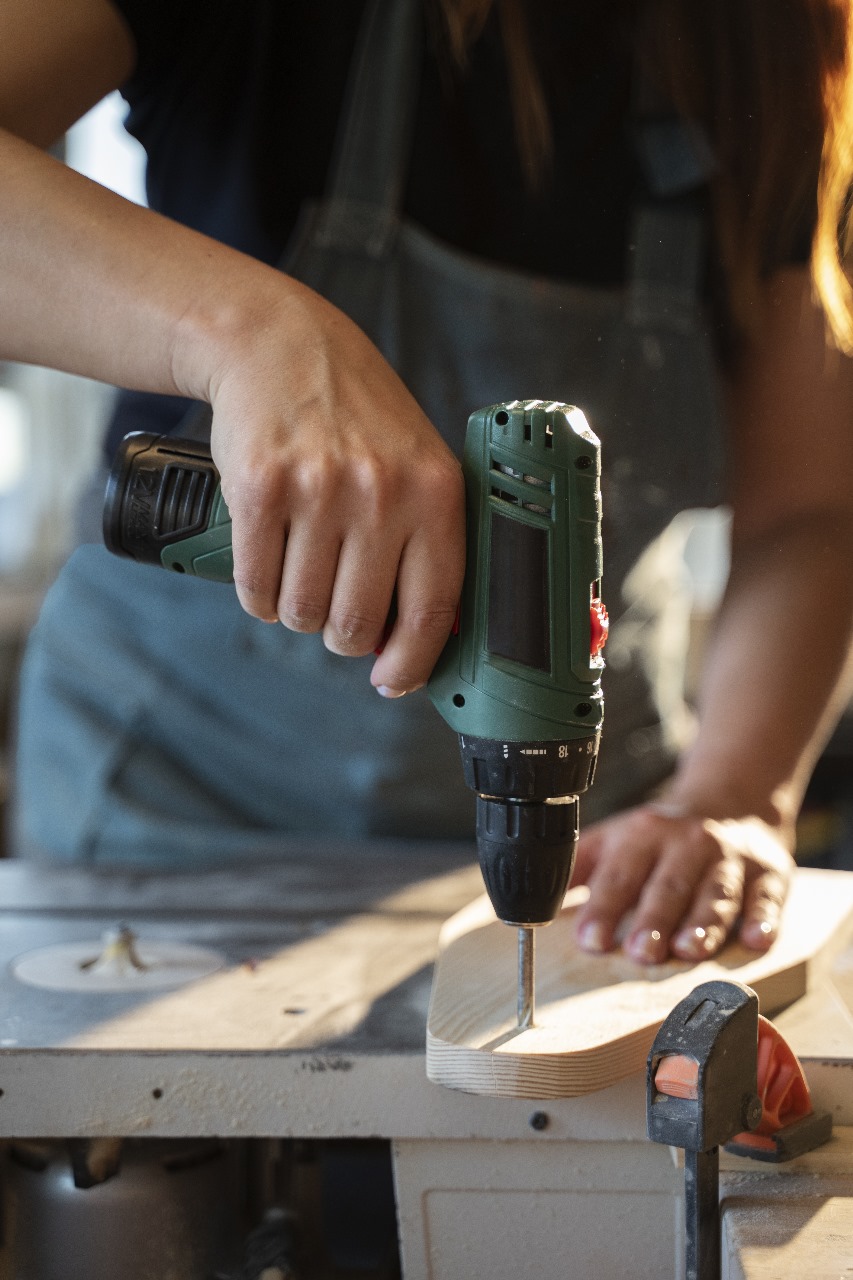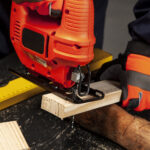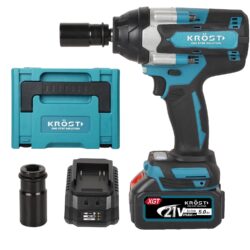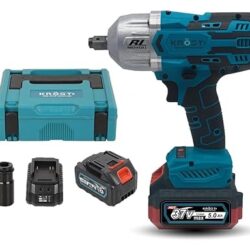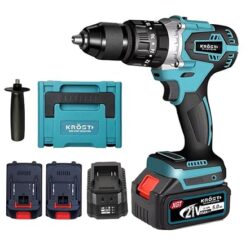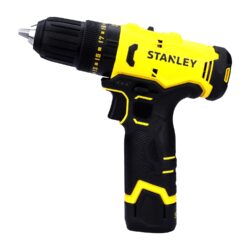Drilling for Dummies: Types and Uses of Different Drill Machines
What is a Drilling Machine?
A drill machine, also known as a drill or drilling machine, is a versatile power tool used for making holes in various materials such as wood, metal, plastic, and concrete. It operates by rotating a drill bit to cut into the material. Drill machines can be handheld or mounted on a stand or workbench, depending on their design and intended use.
Functions of a Drill Machine
- Drilling Holes
- Screwing and Unscrewing
- Mixing paint, adhesives, or other substances.
- Sanding and Polishing
- Countersinking
- Reaming
- Tapping
- Drilling at Angles
- Hammering Action
Types of Drilling Machines
Magnetic Drill
Features of a Magnetic Drill:
- Electromagnet Base: When activated, the electromagnet secures the drill firmly to a metal surface, providing stability and precision.
- Variable Speed Control: Allows adjustment of drilling speed to suit different materials and drill bit sizes.
- Safety Features: Often includes features like automatic shut-off if the magnetic base loses contact with the surface.
- Versatility: Can be used with various types of drill bits, such as annular cutters, twist drills, and countersinks.
Applications of a Magnetic drill:
- Structural steelwork
- Construction and fabrication
- Shipbuilding and maintenance
Bench Drill
Features of a Bench Drill:
- Adjustable Table: The worktable can be moved up, down, and tilted to accommodate workpieces of different sizes and angles.
- Depth Stop: Ensures consistent drilling depth for repetitive tasks.
- Variable Speed Control: Allows selection of appropriate speed for different materials.
- Chuck Capacity: Varies in size, determining the range of drill bits that can be used.
Applications of a Bench Drill:
- Woodworking
- Metalworking
- DIY projects
- Precision drilling tasks
Concrete Vibrator Drill
Features of a Concrete Vibrator Drill:
- Vibrating Mechanism: Vibrations help to settle the concrete into place, removing air pockets and ensuring a dense, uniform mixture.
- Heavy-Duty Design: Built to withstand the harsh conditions of construction sites.
- Interchangeable Heads: Can be fitted with different attachments for various concrete types and applications.
Applications of a Concrete Vibrator Drill:
- Concrete pouring and finishing
- Foundations and slabs
- Columns and beams
Core Drill Machine
Features of a Core Drill Machine:
- Diamond Core Bits: Provide efficient cutting and drilling through hard materials.
- Cooling System: Water or air cooling prevents overheating and prolongs bit life.
- Variable Speed Control: Adjusts to the hardness of the drilled material.
- Safety Features: These include mechanisms to prevent overload and protect the user.
Applications of a Core Drill Machine:
- Creating holes for plumbing, electrical, and HVAC installations
- Sample extraction for testing
- Installation of anchor bolts and rebar
Hammer Drill
Features of a Hammer Drill:
- Hammering Mechanism: Delivers rapid, short hammering thrusts to pulverise material while the drill bit rotates.
- Adjustable Mode: Can switch between drilling, hammering, and combining both.
- Variable Speed Control: Allows for precise operation in different materials.
- Chuck System: Typically uses a keyless or SDS chuck for quick bit changes.
Applications of a Hammer Drill:
- Masonry and concrete drilling
- Tile and stone installation
- Heavy-duty construction tasks
Press Drill
Features of a Press Drill:
- Stable Base and Column: Ensures rigidity and accuracy during drilling.
- Adjustable Table: Allows movement in various directions to accommodate different workpiece sizes and angles.
- Depth Stop: Ensures consistent drilling depth.
- Variable Speed Control: Facilitates drilling different materials with appropriate speeds.
Applications of a Press Drill:
- Precision drilling in metal and wood
- Creating repeated, identical holes
- Industrial and workshop use
Uses of Different Drilling Machines
Magnetic Drill
- Structural Steel Work: Drilling holes in steel beams, columns, and girders for construction projects.
- Fabrication: Creating precise holes in metal sheets and components for manufacturing.
- Shipbuilding: Drilling in ship hulls and frames.
- Maintenance: Repairs and modifications of large metal structures.
- Railroad Construction: Drilling rail tracks for installation and maintenance.
Bench Drill
- Woodworking: Drilling precise holes in wood for furniture making, cabinetry, and other projects.
- Metalworking: Drilling, countersinking, and tapping holes in metal parts.
- DIY Projects: Versatile tool for home improvement tasks.
- Model Making: Precision drilling for small, intricate parts.
- Jewellery Making: Drilling holes in metal, plastic, or other materials for jewellery.
Concrete Vibrator Drill
- Concrete Pouring: Ensuring proper compaction and eliminating air bubbles in concrete slabs, columns, and walls.
- Foundation Work: Achieving solid and durable concrete foundations.
- Structural Elements: Consolidating concrete in beams, pillars, and other structural components.
- Repair Work: Improving the density and strength of repair patches in concrete structures.
- Precast Concrete: Vibrating moulds to produce high-quality precast concrete products.
Core Drill Machine
- Plumbing and Electrical Installations: Drilling holes for pipes, conduits, and cables through concrete and masonry walls.
- HVAC Systems: Creating openings for ductwork and ventilation.
- Sample Extraction: Obtaining core samples of concrete or asphalt for testing and analysis.
- Anchoring: Installing anchor bolts and rods in concrete structures.
- Demolition: Creating large openings or removing sections of concrete.
Hammer Drill
- Masonry Drilling: Creating holes in brick, stone, and concrete for anchors and fasteners.
- Tile Installation: Drilling holes in tiles and masonry for fixtures.
- Construction: Heavy-duty drilling tasks in construction projects.
- Renovation: Remove tiles and drill them into concrete floors and walls.
- Demolition Work: Breaking up concrete and masonry with a chisel attachment.
Press Drill
- Precision Drilling: Creating accurate and repeatable metal, wood, and plastic holes.
- Metalworking: Drilling, reaming, and tapping holes in metal parts.
- Woodworking: Drilling holes for joinery, doweling, and other applications.
- Assembly Line Production: Consistent drilling operations in manufacturing processes.
- Prototyping: Drilling and modifying parts for prototypes and models.


